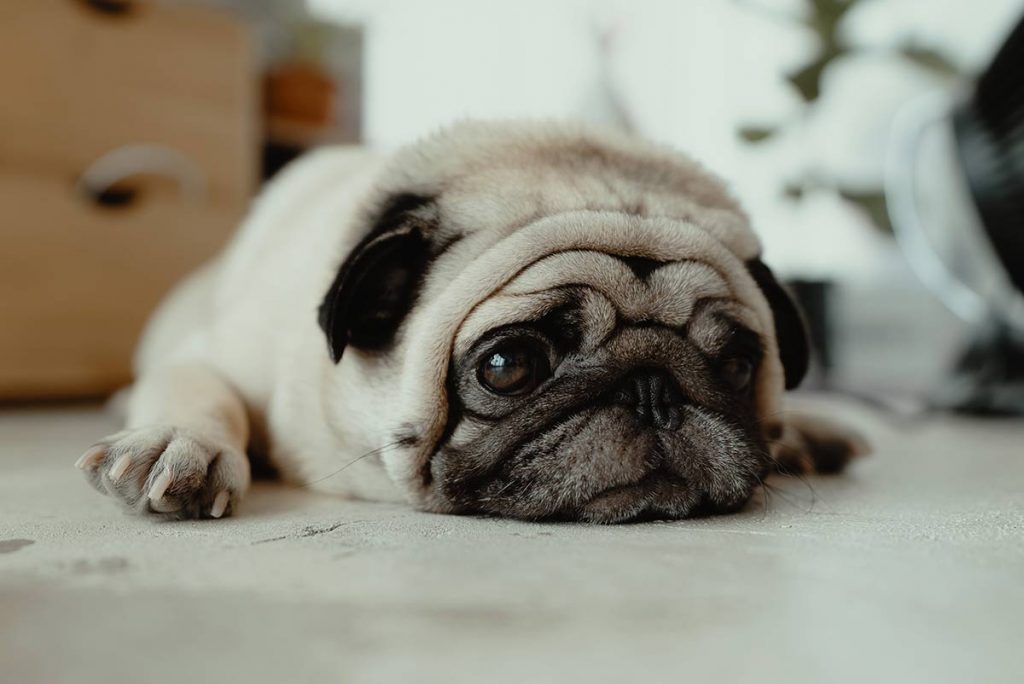
Bringing your dog home immediately after ACL surgery can be an undeniably emotional experience. However, knowing what to expect after your dog has ACL surgery will help put your mind at ease so you can provide the excellent care your furry friend needs in order to have a full recovery.
Why is My Dog Whining After ACL Surgery?
There are few things sadder than hearing your dog crying or howling after ACL surgery. Although the alarming sound of your dog whining and crying is heartbreaking for you, it doesn’t necessarily mean that your dog is in pain.
In fact, it’s actually quite normal for a dog to cry throughout the night post ACL surgery. This is due to the effects of anesthesia, which can last up to 24 hours for most dogs, and up to 72 hours in some cases.
Normal Behavior After Anesthesia

When your dog wakes up after undergoing anesthesia, he or she will most likely be confused and disoriented. Especially if your dog wakes up in a confined area of your home unable to jump on their favorite comfy couch.
Remember when you were a kid and you fell asleep on the couch or floor, but the next day you woke up in your bed without realizing your parents carried you there? This is similar to how your dog feels, because they may not remember being driven home from the vet at all. All they know is that they are somewhere new and possibly unfamiliar with a cone on their head.
Your dog may be nauseated and might even refuse to drink or eat (temporarily). You should still provide your dog access to food and water though. Shivering and panting is another normal side effect of anesthesia and is nothing to be too concerned about.
How to Reduce Soreness After Dog ACL Surgery
Although your dog may not be crying from pain, you can do a few things to comfort them after surgery.
- You can use ice packs on your dog twice daily for ten to fifteen minutes at a time to help reduce soreness and inflammation.
- You can spend time with your dog, pet him or her and talk to them in a soothing voice.
- Sooth your dog after surgery by gently massaging their ears for 5 minutes at a time. When you rub your dog’s ears, she’s essentially getting high on her own hormones, says Dr. Allen Schoen, director of the Center for the Advancement of Veterinary Alternative Therapies.
- Keep your furry friend mentally stimulated with puzzle games for dogs
No matter how much your dog cries, do not give them over-the-counter pain medication!
The following medications are poisonous to dogs and can cause death: Ibuprofen, Acetaminophen, Tylenol or Aspirin.
Abnormal Behavior After Dog ACL Surgery: Emergency Symptoms

You should consult a professional if you’re concerned about your dog’s post-surgical recovery, but especially if you notice any of the following signs or symptoms.
Consult a professional immediately if:
- Your pet’s abdomen is bruised and distended
- The incision is bleeding faster than you can blot it up
- Your pet’s gums are pale or white instead of pink, brown or black
- Your dog is gasping/struggling for breath
Remember, recovery takes time. Stay hopeful and positive and take things one day at a time. If you’re following these tips and the post-surgical care instructions, your dog will improve and feel better each day.
Sources:
- https://franklintnvet.com/after-dog-acl-surgery/
- https://veterinarypartner.vin.com/default.aspx?pid=19239&id=4952244
- https://www.ddfl.org/wp-content/uploads/2015/10/Post-SpayNeuter-Instructions-and-FAQs-English.pdf
- https://phz8.petinsurance.com/ownership-adoption/pet-ownership/pet-behavior/dog-ear-rubs
- https://dogtime.com/dog-health/67343-can-i-give-my-dog-aspirin-safe-for-dogs